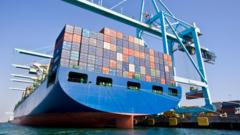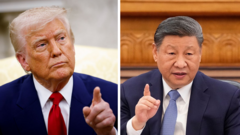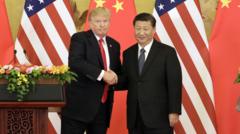President Trump continues to assert that the U.S. has no dependency on Canadian exports, claiming a significant trade deficit that experts dispute. This points to a growing tension in U.S.-Canada trade relations under his presidency.
Trump's Views on Canada Spark Controversy in Trade Relations

Trump's Views on Canada Spark Controversy in Trade Relations
As President Trump questions the necessity of Canada's trade segments, Canadian officials respond to his claims of unfair advantages.
In recent comments, President Trump raised eyebrows by questioning the United States' reliance on Canada, asserting that the nation can thrive without what he termed as essential Canadian imports like cars, energy, and lumber. During a meeting with Canadian Prime Minister Mark Carney last week, Trump reiterated his belief that the trade relationship is skewed in Canada’s favor, using social media to express a controversial economic viewpoint.
The President claimed that the U.S. was subsidizing Canada to the staggering amount of $200 billion, a figure that reflects a misunderstanding of the actual trade deficit, which stood at $63.3 billion for the previous year. Experts clarify that when factoring out energy exports, Canada actually contributes to a trade surplus with the U.S.
Trump emphasized his stance in a post, stating, “We don’t need their Cars, we don’t need their Energy, we don’t need their Lumber, we don’t need ANYTHING they have, other than their friendship.” This sentiment underscores a growing narrative within his administration surrounding the perceived imbalance in trade dependencies, challenging long-held views of mutual economic reliance between the two nations.
The ongoing dialogue raises questions about the future of U.S.-Canadian economic ties. While Trump's assertions indicate a desire to renegotiate aspects of the trade agreement, industry leaders in sectors like automotive and energy are voicing concerns about the potential consequences of such a divisive approach to bilateral relations. As sentiments deepen, the complex interplay of interdependence looms large in the landscape of North American trade policy.























